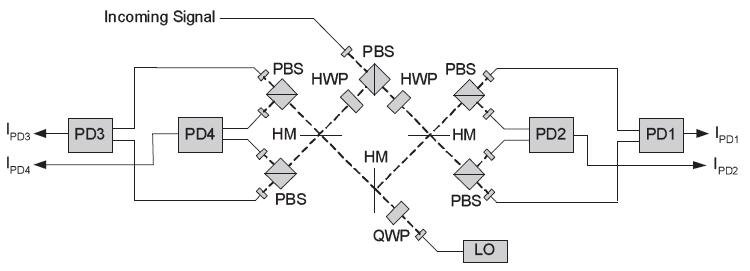What are Coherent Optics and Why Should They Matter to You?
In a previous blog, we talked about coherent optics and how they related to today's newest PON technologies. Let's talk a bit more about why you should care.
Coherent optics in fiber optic communications have been around almost as long as fiber optics. They were first considered for long haul fiber optics in the late 1980s to extend optical repeater distance (due to the much higher sensitivity obtained with coherent receivers).
Progress was interrupted for 20 years with the advent of erbium doped fiber amplifiers, which allowed a simple way of periodically amplifying the optical signal and extending the distance between repeaters further than coherent optics could.
Recently interest in coherent optics has resurfaced for long haul transmission due to the high spectral efficiency that coherent optics enable, as well as larger link budgets.
Coherent optics use classic homodyne receiver technology invented for the radio communications. They have the advantage of greatly increasing the sensitivity of a receiver while allowing very selective tuning, which means that the channel spacing can be very close, whether they are radio or optical channels.
Coherent optics obtain the benefits of high sensitivity and selectivity by mixing the signal with a local oscillator (LO) at the receiver. If the LO light is at the same wavelength, phase, and polarization as the signal, the LO and signal will beat against each other and create a baseband signal retaining the information content that is much larger in amplitude than the incoming signal, making it easy to detect. If the LO is tuned even slightly away from the signal channel wavelength, the baseband signal will disappear. If there is a closely spaced adjacent channel and the LO is tuned to that channel, there will be a new baseband signal representative of the adjacent channel. This property is what is responsible for the high selectivity, like the tuner in a radio.
Coherent optics require that the phase and polarization of the signal be the same as the LO when mixed. This is impossible to control with the typical fiber used for communications and therefore must be handled in the receiver. To handle random polarization and phase a coherent receiver can split the polarizations via polarization beam splitters and send the signals to separate receivers. Figure 1 shows the large number of components that are needed for the homodyne optical receiver, and we will explore them in more detail in the next installment. Note: this is just one implementation of such a receiver.

Already coherent optics are increasing the capacity of installed long haul fiber networks and are partly responsible for reducing the cost per bit for high speed communications, which our modern society has come to depend on.
In the next installment of this blog, we will examine the possible application of coherent optics to PON based systems.
Related Articles



